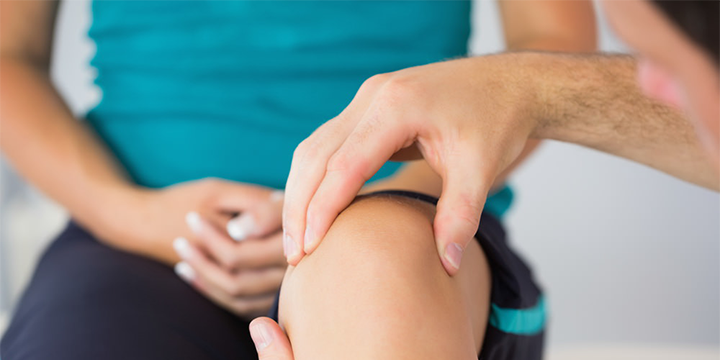It was the thought of being forced to give up cooking that made Rita try physiotherapy. Her hands and wrists had ached ever since she’d taken notes by hand and on her computer in college. Blood tests were performed to rule out rheumatoid arthritis, but she had no idea what to do next. Her husband urged her for years to try physiotherapy but she thought she had the kind of permanent damage that nothing short of surgery could address. But she knew that if her hands got much worse, she wouldn’t be able to cook or make a living as a writer, so she finally made an appointment with a physiotherapist.
The results were hard to exaggerate. In weekly sessions at the clinic, her physiotherapist stretched her shortened muscles and added strengthening exercises to curtail future problems. She experienced some pain relief within days and a near-total return to normal after just two months. She realized that physiotherapy can even treat long-term problems and that I wasn’t looking at months and months of expensive treatment in my case and many others, appointments taper off rapidly once the problem is identified and at-home exercises begin.
Pain is your body’s way of raising an alarm. It tells you that something is not right. When part of your body is wounded or damaged, nerves in that area release chemical signals. Other nerves act like tiny telephone wires and send these signals to your brain where they are recognized as pain. This signal is useful because it is your body’s way of protecting you from further injury.
Ongoing or long-lasting chronic pain, for example, the pain of arthritis is a bit different. While chronic pain is also an indicator that tells you something is wrong, it often isn’t satisfactorily relieved when you treat it. Controlling this category of pain is essential since it can disrupt your life. The means used to control short-term (acute) pain such as strong painkillers are not useful for controlling the chronic pain of arthritis.
What causes arthritis pain?
Arthritis is a group of diseases that cause swelling or inflammation of the joints. Other common types of chronic pain are backache, muscle pain, headache and sore feet.
Arthritis pain is caused by:
- Inflammation, the process that causes the tenderness, redness and swelling in your joints damage to joint tissues caused by the disease process or from wear and tear
- Muscle strain caused by overworked muscles attempting to protect your joints from painful movements
- Fatigue caused by the disease process which can make your pain seem worse and harder to handle
Arthritis pain differs from person to person. There are no easy answers or magic solutions to relieve arthritis pain.
Pain management and Physiotherapy for arthritis
At TriBeCa Care, our physiotherapists can help you understand what happens to your joints and muscles when you have arthritis. Understanding your arthritis will help you manage its effects.
Arthritis can cause pain in one particular part of the body or more widespread joint and muscle pain. Medications will help but our physiotherapist can tell you about other methods of pain relief that work alongside your medications. You’ll be able to continue with some of these treatments yourself between appointments:
- Ice packs can be used to soothe hot, swollen joints.
- Heat packs help to relax tense, tired muscles.
- Splinting of swollen or painful joints may be helpful, for example during a flare-up of rheumatoid arthritis. Our physiotherapists may provide temporary splints for you.
- TENS (transcutaneous electrical nerve stimulation) works by blocking pain messages to your brain and altering your perception of pain. A TENS machine is a small electronic device that sends pulses to your nerve endings via pads placed on your skin. This causes a tingling sensation that you may find soothing.
The TriBeCa Care physiotherapist focuses on the body’s ability to engage in movement. Movement can be anything from getting in and out of chairs to climbing stairs, walking in your neighborhood, playing a sport or doing recreational activities. Goals of physiotherapy for arthritis include improving the mobility and restoring the use of affected joints, increasing strength to support the joints, and maintaining fitness and the ability to perform daily activities.
What Can a TriBeCa Care Physical Therapist Do for You?
- Develop an individualized plan of exercises to improve flexibility, strength, coordination and balance to achieve optimal physical function.
- Teach you proper posture and body mechanics for common daily activities to relieve pain and improve function.
- Show you how to properly use assistive devices such as walkers and canes.
- Recommend different treatment options, such as braces and splints to support joints, shoe inserts to relieve stress on the lower extremities, and hot and cold therapy to ease joint pain and stiffness.
- Suggest modifications to your environments, such as ergonomic chairs or a cushioned mat in your kitchen, to relieve pain and improve function.
If you need further help or advice, give us a call. TriBeCa Care is happy to be by your side. Request a callback or call us at + 913366064208.
Email us at enquiry@newwpsite.tribecacare.com

